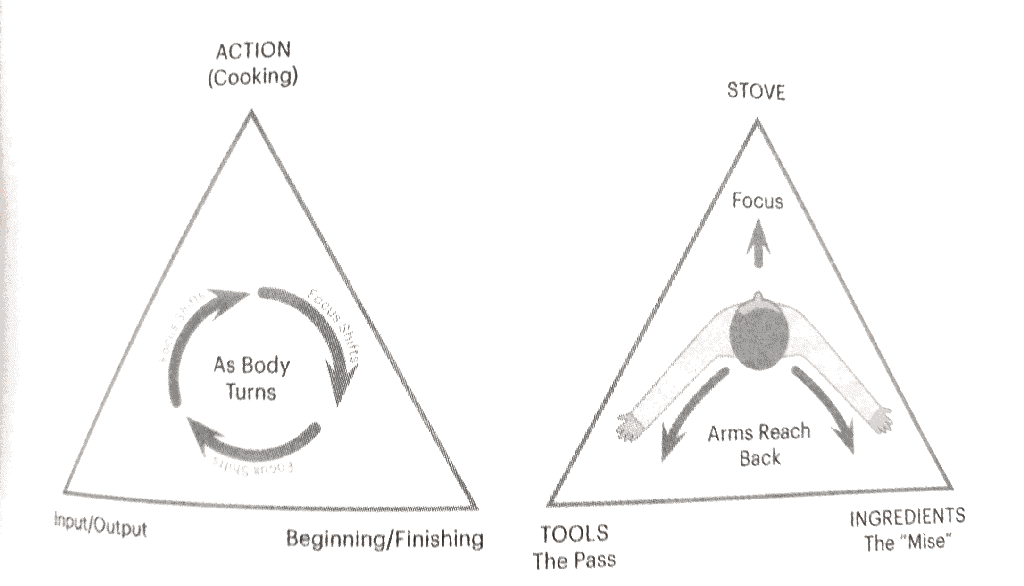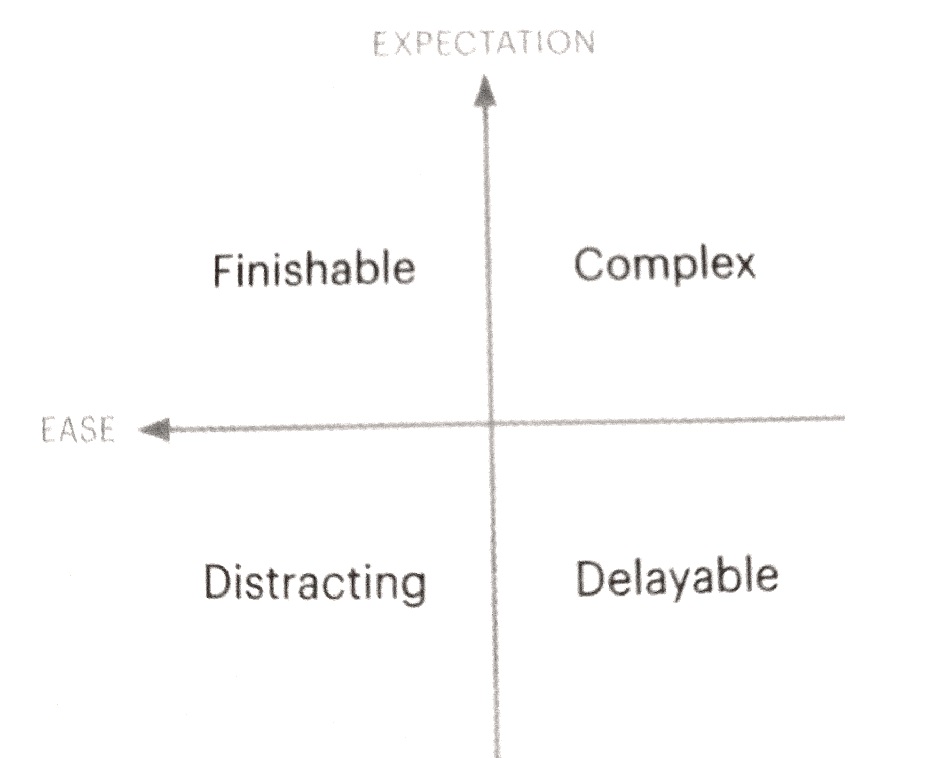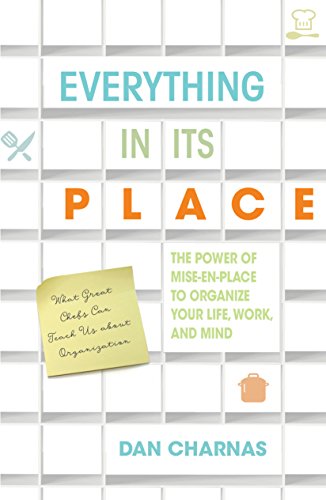Everything In Its Place (originally "Work Clean") by Dan Charnas - Summary and Book Notes
(This book was originally titled “Work Clean”)
Chefs deliver their dishes to customers, night after night. To the untrained eye, the kitchen looks chaotic: people dashing here and there, pans slamming onto burners, knives chopping, tickets printing. But somehow, every dish is served, right on time. If the chef can’t deliver, their livelihood is at stake.
Compare to an office, where deadlines are constantly pushed, budgets are overrun, and meetings drag on forever. What can office workers learn from chefs?
Review
Charnas dove deep into the culinary world to research this book and it shows. He does an excellent job showing us the mindsets of excellent chefs and how they operate. It’s one thing to show what chefs do, but it’s much more difficult to bring those techniques into a different context. Charnas does exactly that, outlining a system for office workers that reflects the valuse of chefs. At the end of each chapter is a set of exercises for implementing a system of working clean. Working through these exercises has drastically improved my throughput.
I highly recommend this book for:
- The frantic office worker who lets things fall through the cracks
- The chronically disorganized
- Anyone whose work is largely project based
If you care at all about delivering quality work on time, read this book and do the exercises. Well worth it.
Buy Everything In Its Place on Amazon
Quick Summary
- Because the kitchen operates under intense time pressure, it has developed a more refined philosophy of organization [than the modern office].
- The Three Values of Mise-En-Place: Preparation, Process, Presence
- Making a [todo-list] is only half the job of planning. To complete the other half, the chef must square that list with the clock
- The real work of mise-en-place isn’t being clean, but working clean, keeping that system of organization no matter how fast and furious the work is.
- A dish that is 90 percent finished has the same worth as a dish that is zero percent finished.
- Don’t act like you have all the time in the world, and that goes double for how you treat the time of the people who work for you.
- What we’re after is excellence, not productivity.
Want to level up your productivity and start getting work done?
We built an interactive coach, available 24⁄7 to give you a feasible next step to improve your productivity skills.
Get the Digital Productivity Coach
Book Notes
The following are rough notes I took while reading. These are mostly paraphrased or quoted directly from the book.
Chaos
[Frantic office worker Jeremy’s] problem isn’t self-discipline. His problem isn’t lack of skill. His problem is this: He doesn’t have a philosophy and a system. His formal education never included instructions on how to organize his workflow
Because the kitchen operates under intense time pressure, it has developed a more refined philosophy of organization [than the modern office].
“What did it take to become great?” “Make sure that your station is clean” “And?” “And everything follows from that” – Chef Thomas Keller
The Three Values of Mise-En-Place:
- Preparation
- Process
- Presence
Planning is Prime
Making a [todo-list] is only half the job of planning. To complete the other half, the chef must square that list with the clock.
- Determine our daily actions
- Order those actions in sequence
Plan complex, multi-step projects as chefs do: with the end in mind…envision the moment of delivery, then plan backward from it.
Arranging Spaces, Perfecting Movements
Chefs arrange their spaces. A chef’s tools and ingredients must be arranged in a precise, predictable, economical way.
Chefs train and restrain their movements. The point of arranging spaces is not beauty, but to allow movements to be free, small, rhythmic, and automatic.
Jacobi White’s Magic Triangle

[Kitchen designer Jimi Yui’s] designs follow another principle: Make the kitchen and the spaces within it as small as possible
Balanced movement is a key part of ergonomic movement. Use both hands, both sides of a space, both sides of an action (plate of food out, dirty plate back).
Chefs chain tasks: while handling task A, their minds envision task B.
Cleaning as You Go
The real work of mise-en-place isn’t being clean, but working clean, keeping that system of organization no matter how fast and furious the work is.
This holistic view of cleaning–that it should be integrated into every moment of a chef’s work, and that cooks clean not just for one but for all–creates the foundation for excellence in the professional kitchen.
Try not to begin a new project without putting the old one away. Keeping your e-mail open while you focus on a creative task may seem harmless. But odds are you’ll be tempted to check it.
Knolling:
- Scan your environment for materials, tools, books, etc., which are not in use.
- Put away everything not in use. If unsure, leave it out.
- Group all “like” objects
- Align or square all objects to either the surface they rest on, or the studio itself.
Making First Moves
The first moments count more than later ones.
An action taken now has immeasurably more impact than a step taken later because the reactions to that action have more time to perpetuate.
A chef thinks in this way:
- In the foreground: projects that need my presence. Immersive Time.
- In the background: projects that don’t need my continued presence, but need me to start or maintain them. Process Time
A first move can serve as a placeholder or a mark.
Making first moves creates momentum.
Get in the habit of determining what tasks require immersive versus process time.
Get in the habit of marking down every action, whether an incoming task is given in person or via electronic communication.
Finishing Actions
A dish that is 90 percent finished has the same worth as a dish that is zero percent finished.
Finishing actions clears the mind. Avoid orphaned tasks–tasks that take up physical and mental space because they haven’t been tied up in the easiest possible form to be resumed later.

complex tasks most need scheduling.
__How to tie up a task in progress:
- Collect all materials for the project and keep them in one place until you resume
- Jot down any thoughts at the top of your mind
- Schedule your session to resume the work, or set a reminder to schedule the session later
- Communicate progress to stakeholders__
Always be unblocking. What’s stopping me from moving forward?
Slowing Down to Speed Up
Don’t rush; when you rush, your movements become sloppy. Don’t panic; when you panic, you forget things.
Precision must always precede speed.
In times of stress or panic, clean your workstation–your desk and/or your computer–so that your visual field is clear.
Open Eyes and Ears
Chefs tune their senses. Attunement: Chef Briggs distinguishes between a focus scattering openness and what she’s really advocating, which is something more selective. “They need to tune in to my voice.”
If you need to disconnect to get more work done, check communication channels on a scheduled basis (e.g. every hour) and turn off alerts until that time.
Call and Callback
Chefs demand specifics. “Don’t tell me ‘Heard.’ Tell me what you heard.”
Don’t act like you have all the time in the world, and that goes double for how you treat the time of the people who work for you.
- Kitchens maintain one stream of information. The fewer streams, the better
- Communication should be clear, concise, and respectful
- Coworkers should have a common language
- Communication should be confirmed with specificity, and reconfirmed when needed, for accuracy and memory.
Inspect and Correct
Perfectionism vs Delivery: Excellence itself is a compromise between the two: quality delivered.
Set standards for your work.
Total Utilization
Chefs abhor waste.
The goal of completely eliminating waste is impossible. And yet this thought form provides the target at which all kitchen work aims: total utilization, in four interrelated dimensions–space, motion (energy), time, and resources.
In these pages, clean doesn’t mean neat and tidy. Clean is conscious, ordered, prepared, persistent, honest, honorable.
Anything else is just a waste.
Get your most important spaces in order because space is precious. Practice and perfect the motions that make sense to refine because your energy is precious. Honor time because you’re not getting any more of it. Use your resources wisely because ultimately we all must share them. And treat each other with care.
The Commitments of Working Clean
Committing to values:
- Commit to preparation with a 30-minute daily planning session.
- Commit to a process that makes you better.
- Commit to being present in whatever you do.
What we’re after is excellence, not productivity.
Buy Everything In Its Place on Amazon

